How a tiny village became India's YouTube capital
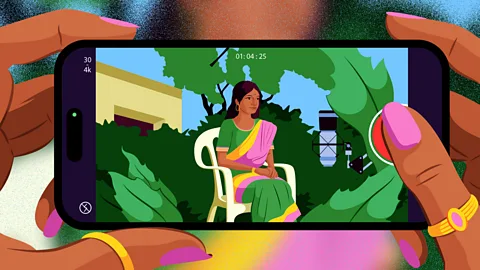 Estudio Santa Rita
Estudio Santa RitaIn Tulsi, a village in central India, social media has sparked an economic and social revolution. It's a microcosm of YouTube's effect on the world.
As villagers head into the fields of Tulsi, a village outside Raipur in central India, on a muggy September morning, 32-year-old YouTuber Jai Varma asks a group of women to join him for his latest video. They gather around him – adjusting their sarees and sharing a quick word and a smile.
Varma places an elderly woman on a plastic chair, asks another to touch her feet and a third to serve water, staging a scene of a rural village festival for fans who will enjoy his content from cities and countries thousands of kilometres away. The women, familiar with this kind of work, are happy to oblige. Varma captures the moment, and they return to their farmwork.
A few hundred metres away, another group is busy setting up their own production. One holds up a mobile phone, filming as 26-year-old Rajesh Diwar moves to the rhythm of a hip-hop track, his hands and body animated in the expressive style of a seasoned performer.
Tulsi is like any other Indian village. The small outpost in the central state of Chhattisgarh is home to one-storey houses and partially paved roads. A water storage tank peers out above the buildings, overseeing the town. Banyan trees with concrete bases serve as gathering spots. But what sets Tulsi apart is its distinction as India's "YouTube Village".
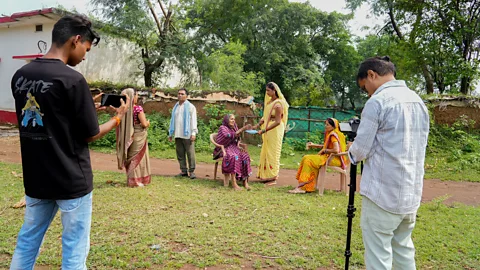 Suhail Bhat
Suhail BhatSome 4,000 people live in Tulsi, and reports suggest more than 1,000 of them work on YouTube in some capacity. Walk around the village itself and it's hard to find someone who hasn't appeared in one of the many videos being filmed there.
The money that YouTube brings has transformed the local economy, locals say, and beyond financial benefits, the social media platform has become an instrument for equality and social change. The residents who've launched successful YouTube channels and found new streams of income include a number of women who previously had few opportunities for advancement in this rural setting. Under the banyan trees, conversations have turned to technology and the internet.
February 2025 marks the 20th anniversary of YouTube. Approximately 2.5 billion people use the platform per month by some estimates, and India is one of YouTube's biggest markets by far. Over the decades, YouTube has changed not only the web but the entire way we think about creating and consuming human culture. In a way, Tulsi village is a microcosm of YouTube's effect on the world itself, where for some, their entire lives revolve around online videos.
"It is keeping the children away from bad habits and crime," says Netram Yadav, 49, a farmer in Tulsi and one of the many admirers of the village's burgeoning social media scene. "These content creators have made everyone in the village proud for what they have been able to achieve and do."
Tulsi's Youtube transformation started back in 2018, when Varma and his friend Gyanendra Shukla launched a YouTube channel called Being Chhattisgarhiya."We were not content with our routine lives, and wanted to do something that would allow our creative juices to flow," Varma says.
YouTube turns 20
For more on the world's biggest video platform, read our stories on:
Their third video, about a young couple being harassed on Valentines Day by members of Bajrang Dal, a right wing Hindu nationalist group, was the first to go viral. The mix of comedy and social commentary struck a chord. "The video was humorous, but it also had a message, and we left it open for viewers to interpret," Varma says.
The duo gained tens of thousands of followers in a matter of months, a number that's since spread to over 125,000 subscribers and a cumulative viewership exceeding 260 million. Their families' concerns about dedicating so much time to social media were silenced when the money started flowing in. "We were earning over 30,000 rupees [about £278 or $346] a month, and were able to support the team members who helped us," Shukla says. He and Varma left their jobs to pursue YouTube full-time.
Their success was soon an inspiration to other Tulsi residents. Shukla says his team paid their actors and even provided training for others in editing and script writing. Some villagers created their own channels, while others were content to volunteer.
It was enough to attract attention from local officials. Impressed by the success of the village content creators, the state government established a state-of-the-art studio in the village in 2023. Sarveshwar Bhure, former collector – a senior civil servant – of the Raipur district which includes Tulsi, says he saw the village's YouTube work as an opportunity to address the digital divide. "I wanted to bridge the gap between rural and urban life by providing this studio," Bhure says. "Their videos are impactful, with strong themes, and have reached millions. Setting up a studio was a way to motivate them."
The bet paid off. YouTube has created a livelihood for hundreds of young people in the village, Bhure says. It's stoking a regional entertainment industry and launching some Tulsi YouTubers out of their small-town life.
From the cellphones to the big screen
Of all the social media stars born in Tulsi's YouTube frenzy, none has risen higher than 27-year-old Pinky Sahoo. Growing up in a remote village built around agriculture, Sahoo's aspirations of becoming an actress and dancer felt like a distant fantasy – thanks especially to disapproval from family and neighbours who saw acting as taboo.
Despite their criticism, Sahoo started posting dance videos on Instagram Reels and YouTube Shorts. Her breakthrough came when the founders of Being Chhattisgarhiya spotted her videos and recruited her for their own productions. "It was a dream come true," Sahoo recalls. "They recognised my talent and honed my skills.”
The momentum continued as her work with Being Chattisgarhiya caught the attention of local filmmakers in Chattisgarh's regional cinema business, and Sahoo was cast in her first movie role. She's since appeared in seven films. Anand Manikpuri, a producer and director in the nearby city of Bilaspur, was impressed by her YouTube performances. "I was looking for a fresh face who could act, and Sahoo had it all," he says.
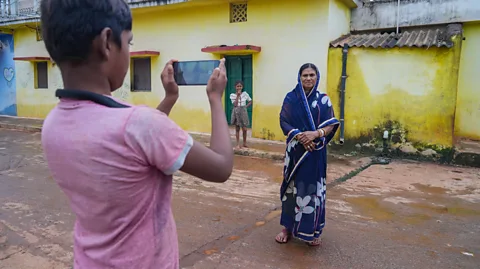 Suhail Bhat
Suhail BhatTulsi resident Aditya Bhagel was still in college when, inspired by Varma and Shukla, he decided to start his own channel. Adapting their techniques, he grew to over 20,000 followers within a year and started earning money from YouTube. Eventually, Varma recruited him for a writing and directing job on the Being Chattisgarhiya team. "It was like meeting celebrities," Bhagel says, recalling his first meeting with Varma and Shukla.
More like this:
• YouTube statistics Google doesn't want you to know
A job in the production house in the nearby city of Raipur soon followed, where he was hired based on his YouTube work. That streak continued when Bhagel landed a role as a scriptwriter and assistant director for an upcoming, big-budget movie titled Kharun Paar. "I can only hope that one day I get to work in tinsel town," he says.
Yet another YouTuber turned cinema professional is 38-year-old Manoj Yadav. He had his first acting role as a child, portraying a young Lord Rama in an annual reenactment of the Hindu epic the Ramayana. Yadav never imagined that those claps would one day echo in cinema halls across Chhattisgarh.
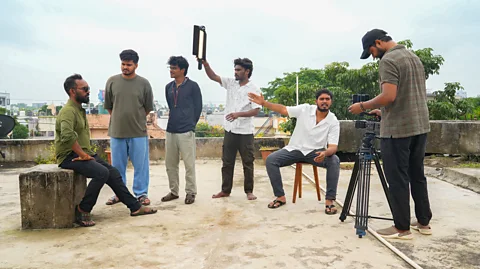 Suhail Bhat
Suhail BhatAfter years of showcasing his talent in YouTube videos, Yadav landed a role in a regional film, one that earned widespread praise for his acting skills. Today, Yadav has not only made a name for himself but built an entire livelihood through his craft. "None of this would have been possible without YouTube," he says "I can't put my feelings into words."
Empowering women
In Tulsi, YouTube has paved the way for women to take centre stage in this technological revolution.
According to Draupadi Vaishnu, the former Sarpanch, or village head of Tulsi, YouTube can play a crucial role in challenging biases and changing societal norms in India, where domestic abuse remains a prevalent issue. "It's common for women to perpetuate [misogynistic practices], especially in how they treat their daughters-in-law. These videos help break those cycles," Vaishnu says.
Recently the 61-year-old starred in a video addressing the subject. "I was glad to take on that role because it promoted the importance of treating women with respect and equality, a value I championed during my time as village head," she says.
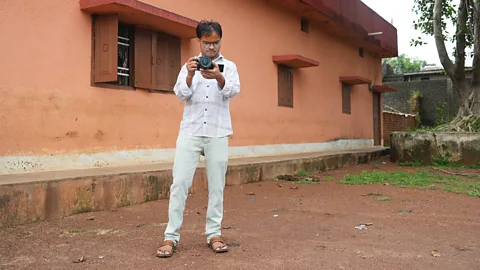 Suhail Bhat
Suhail BhatRahul Varma (no relation to Jai Varma), a 28-year old wedding photographer who learned the art from YouTube from his fellow villagers, says the platform has been transformative. "At first, our mothers and sisters were just helping out. Now, they're running their own channels. It's not something we would have imagined before," he says. Even his 15-year-old nephew assists the village content creators, Varma says. "It is a serious business here, everyone participates."
There was an explosion of rural content creators in India during the Covid-19 pandemic, particularly on TikTok, before India banned the app in 2020. That initial wave was primarily driven by men, says Shriram Venkatraman, an assistant professor at the University of Southern Denmark who studies the impacts of social media in India. However, there are a lot more women running successful social media channels post pandemic, Venkatraman says, and that's created new economic opportunities.
"The amount of global connections that it has brought about is transformative, to say the least," he says, for both men and women. "Some even start other businesses from YouTube using their subscribers and content consumers as their initial customer base, for example, hair oil and homemade spices/masalas."
But for some, money is beside the point. "I love contributing to the videos produced by my village’s channels, and I do it without expecting anything in return," says 56-year-old Ramkali Varma (also no relation to Jai Varma), a homemaker who has emerged as the go-to actress for roles portraying loving mothers, making her one of the village's most sought-after talents.
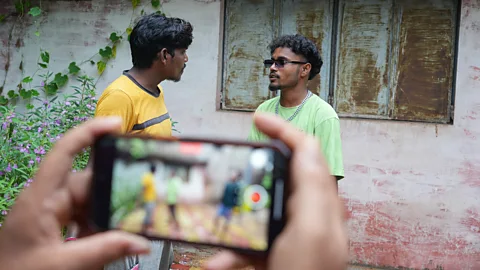 Suhail Bhat
Suhail BhatRamkali's acting roles often address gender issues. A favourite was a supportive mother-in-law who encourages her daughter-in-law to pursue further education, she says. "I've been able to advocate for women's education and success. Acting brings me satisfaction and peace of mind."
Now a successful and self-reliant actress, Sahoo hopes to inspire other young girls. "If I can achieve my dreams, they can too," she says, reflecting on the pride of watching her performance on the big screen with her father. In Tulsi, Sahoo has become a role model for young women. "Seeing girls dream big and aim high is the most rewarding part of my journey. There are girls now who aspire to become filmmakers," she says.
As the sun sets over Tulsi, Diwar and his team work tirelessly to perfect their hip hop beats. "Switching from content creation to rap music hasn't been easy," says Diwar, whose channel's name is Lethwa Raja, which loosely translates to "Amazing King".
Diwar hopes YouTube can be a vector for other cultural shifts for his people. "Not many people rap in our language, but I believe I can change that," he says. "I want to bring a new sound to our region and make Tulsi known for its music as much as its videos."
*Correction: A previous version of this story misstated Shriram Venkatraman's university affiliation. He is an assistant professor at the University of Southern Denmark. This article was originally published on 18 February 2025 and updated on 11 March 2025.
--
For timely, trusted tech news from global correspondents to your inbox, sign up to the Tech Decoded newsletter, while The Essential List delivers a handpicked selection of features and insights twice a week.
